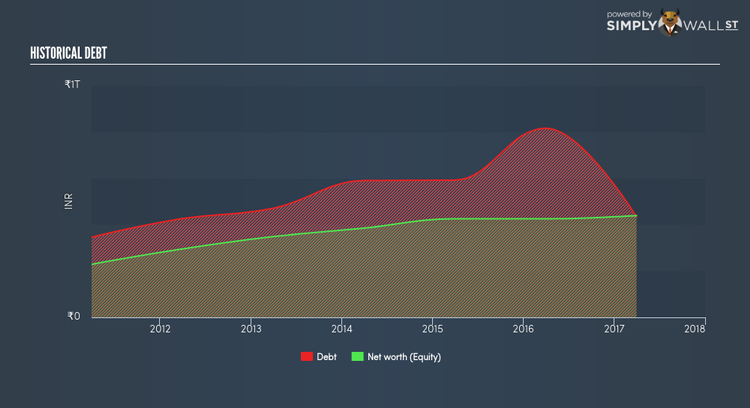Can These Factors Give You An Edge For Investing In Punjab National Bank (NSE:PNB)?

Punjab National Bank’s (NSEI:PNB) profitability and risk are largely affected by the underlying economic growth for the region it operates in IN given it is a small-cap stock with a market capitalisation of INR ₹414.05B. Since a bank profits from reinvesting its clients’ deposits in the form of loans, negative economic growth may lower deposit levels and demand for loan, adversely impacting its cash flow. After the GFC, a set of reforms called Basel III was imposed in order to strengthen regulation, supervision and risk management in the banking sector. The Basel III reforms are aimed at banking regulations to improve financial institutions’ ability to absorb shocks caused by economic stress which could expose banks like Punjab National Bank to vulnerabilities. Unpredictable macro events such as political instability could weaken its financial position which is why it is important to understand how well the bank manages its risk levels. Sufficient liquidity and low levels of leverage could place the bank in a safe place in case of unexpected macro headwinds. Today we will be measuring Punjab National Bank’s financial risk position by looking at three leverage and liquidity metrics. Check out our latest analysis for Punjab National Bank
Is PNB’s Leverage Level Appropriate?
Banks with low leverage are better positioned to weather adverse headwinds as they have less debt to pay off. A bank’s leverage may be thought of as the level of assets it owns compared to its own shareholders’ equity. Though banks are required to have a certain level of buffer to meet its capital requirements, Punjab National Bank’s leverage level of less than the suitable maximum level of 20x, at 17x, is considered to be very cautious and prudent. With assets 17 times equity, the banks has maintained a prudent level of its own fund relative to borrowed fund which places it in a strong position to pay back its debt in times of adverse events. If the bank needs to increase its debt levels to firm up its capital cushion, there is plenty of headroom to do so without deteriorating its financial position.
What Is PNB’s Level of Liquidity?

What is PNB’s Liquidity Discrepancy?
Banks operate by lending out its customers’ deposits as loans and charge a higher interest rate. Loans are generally fixed term which means they cannot be readily realized, however, customer deposits are liabilities which must be repaid on-demand and in short notice. The disparity between the immediacy of deposits compared to the illiquid nature of loans puts pressure on the bank’s financial position if an adverse event requires the bank to repay its depositors. Since Punjab National Bank’s loan to deposit ratio of 67.38%is well-below than the appropriate maximum of 90%, this means the bank is lending out less than its total level of deposits and positions the bank cautiously in terms of liquidity as it has not disproportionately lent out its deposits and has retained an apt level of deposits. Given the large headroom for growth in loans, the bank has opportunity to grow its interest income.
Conclusion
Punjab National Bank meets all of our liquidity and leverage criteria, exhibiting operational prudency. The operational risk side of a bank is an important fundamental often overlooked by investors. Its high liquidity and low leverage levels mean the bank is well-positioned to meet its financial obligations in the case of any adverse and unpredictable macro events.
Now that you know to keep in mind these liquidity factors when putting together your investment thesis, I recommend you check out our latest free analysis report on Punjab National Bank to see its growth prospects and whether it could be considered an undervalued opportunity.
PS. Interested in Punjab National Bank’s competitors instead? Take a look at our free platform for a deep dive into other bank stocks.
To help readers see pass the short term volatility of the financial market, we aim to bring you a long-term focused research analysis purely driven by fundamental data. Note that our analysis does not factor in the latest price sensitive company announcements.
The author is an independent contributor and at the time of publication had no position in the stocks mentioned.

